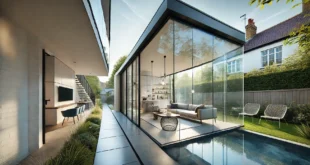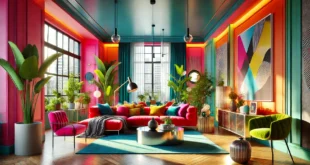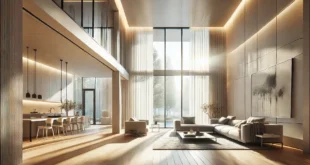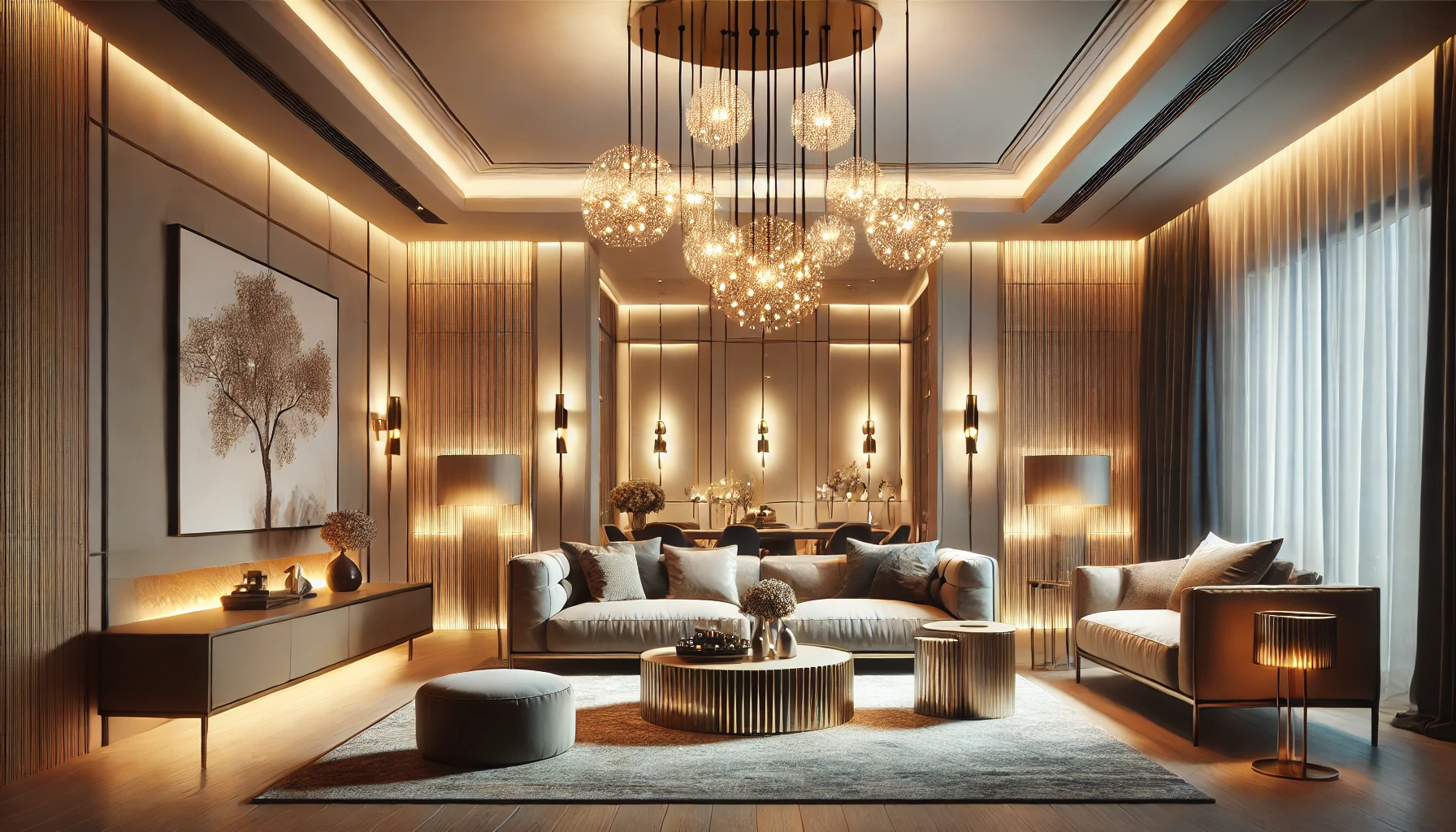
Welcome! Thank you for joining us as we explore the transformative power of home lighting design. Lighting significantly impacts how a space feels and functions, setting the mood and enhancing visibility. Whether you’re revamping your entire home or adding small touches, the right lighting enhances both form and function. It’s not just about practicality anymore; lighting has become a key design element that can accentuate architecture, create ambiance, and make your home feel cozy or energizing, depending on your choices.
In this article, we’ll share various lighting ideas tailored to different styles and spaces, helping you brighten every part of your home. Whether focusing on your living room, kitchen, or outdoor areas, the right lighting can transform the mood and usability of any space. Proper fixtures and placement, along with control systems like dimmers or smart lighting, can make your home more functional and inviting. Whether you want a cozy nook in your living room or a nighttime oasis in your backyard, lighting can help achieve that.
This comprehensive guide is for home designers and homeowners seeking effective solutions and creative inspiration. We’ll break down popular and modern home lighting ideas, budget-friendly options, and energy-efficient solutions. Additionally, we’ll explore DIY lighting projects for those who enjoy adding personal touches to their designs. With the right lighting, every room can become a beautifully illuminated and welcoming space. Let’s dive in and discover how you can transform your home’s ambiance!
Home Lighting Ideas for Living Room: Create a Warm and Inviting Space
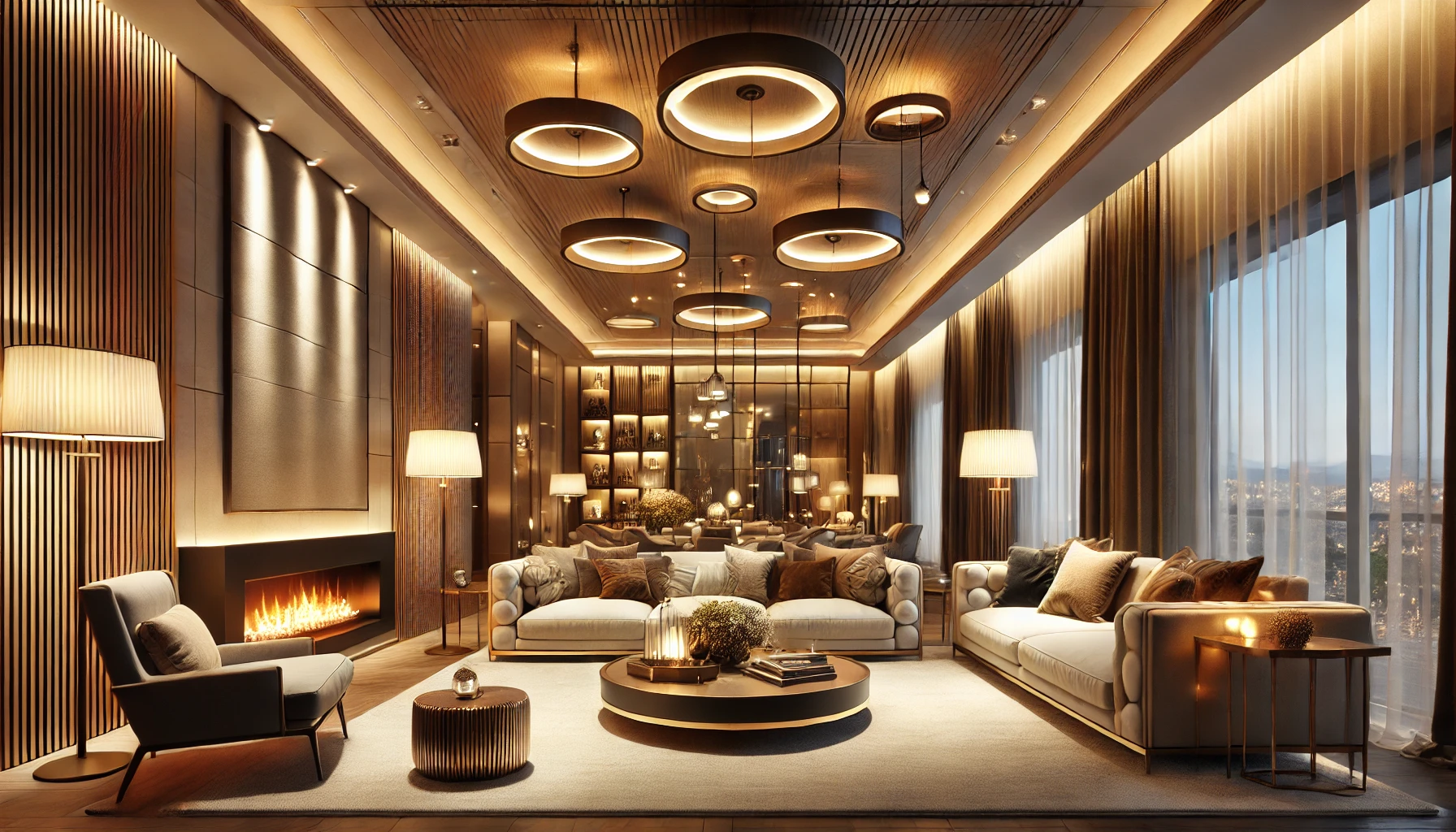
Layered Lighting Techniques
In the living room, lighting is about creating a balanced atmosphere for various activities. Layered lighting is one of the most effective methods to achieve this. By combining ambient, task, and accent lighting, you can tailor the room’s mood to suit any occasion. Ambient lighting, typically provided by chandeliers or ceiling lights, offers overall illumination but can feel flat alone, making task and accent lighting essential.
Task lighting focuses on specific areas where you need more light, such as reading corners or desks. Floor lamps, table lamps, and adjustable wall sconces provide concentrated light right where you need it. Accent lighting highlights features in the room, like artwork or architectural details, adding depth and creating focal points within the space.
Using these three lighting layers together allows you to adjust the mood and brightness for different situations. For example, while watching TV, dim the ambient lights and turn on softer task lights to avoid glare. If you’re hosting guests, using all three layers at different intensities creates a warm and inviting atmosphere that feels cohesive and comfortable. This flexibility is key to achieving perfect living room lighting.
Using Dimmer Switches for Flexibility
Dimmer switches are essential in modern home lighting, especially in living rooms where flexibility is important. With a dimmer, you control the intensity of your lighting, setting the perfect ambiance for any occasion. Whether hosting a lively party or curling up with a book, dimmer switches let you adjust your lighting easily. They also contribute to energy savings by reducing electricity use and extending bulb life.
Living rooms are multifunctional, serving as spaces for socializing, relaxing, and watching TV. Dimmer switches allow you to transition effortlessly between these uses without needing multiple fixtures. For instance, at full brightness, overhead lights can illuminate the entire room for cleaning. However, dimming the lights for movie nights creates a soft glow, perfect for relaxation.
Dimmers enhance other lighting layers, allowing accent and task lighting to stand out more. They are easy to install and can dramatically change how your living room feels and functions. For a cozy, versatile living room that adapts to your lifestyle, dimmer switches are a must.
Modern Home Lighting Ideas: Sleek and Stylish Designs
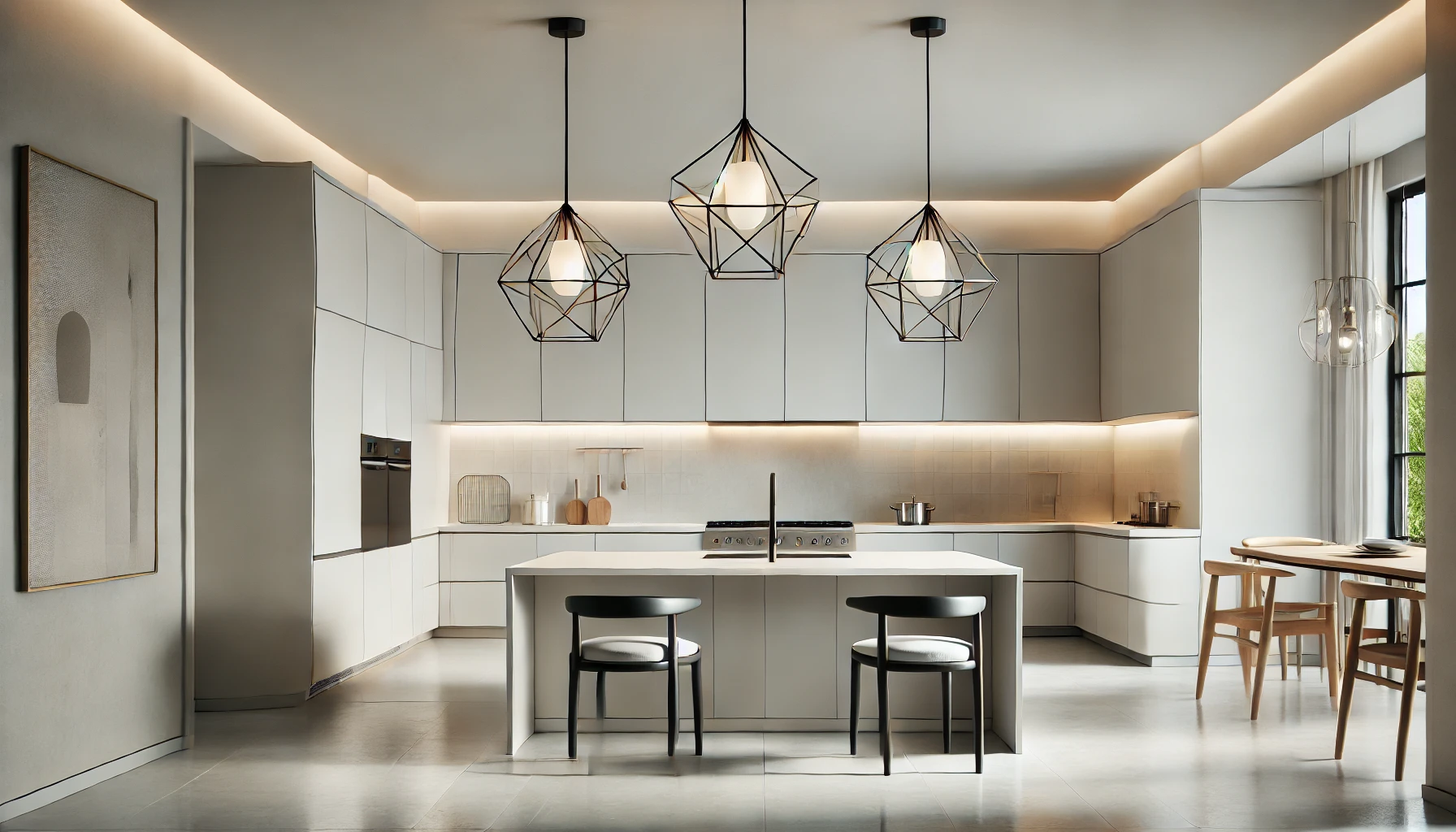
Geometric Pendant Lights
If you’re aiming for a modern aesthetic, geometric pendant lights are stylish choices. Their clean lines and striking shapes add contemporary flair to any room. These fixtures come in various designs, such as hexagons and asymmetrical shapes, making them perfect statement pieces in minimalist settings. Geometric pendant lights are made from materials like metal, glass, or wood, allowing you to match them with different interior styles.
Pendant lights shine above kitchen islands, dining tables, or entryways, acting as focal points. Strategically placed, they provide functional lighting and elevate the room’s design. For instance, geometric pendant lights can introduce dynamic shapes in kitchens, breaking the monotony of cabinetry and countertops.
You can find pendant lights in various sizes and finishes, customizing the look based on your space and style. Some opt for a single oversized pendant for drama, while others cluster smaller ones for an artistic touch. No matter how you choose to use them, geometric pendant lights elevate modern design elements in your home.
Recessed Lighting for a Clean Look
Recessed lighting is a hallmark of modern design, known for its minimalist and unobtrusive appearance. Unlike traditional fixtures that hang down, recessed lights are installed flush with the ceiling, creating a sleek, clean look. This lighting type suits those who prefer understated designs or want to keep the focus on other room elements, like furniture or artwork.
One key benefit of recessed lighting is versatility. It can provide general illumination or target specific areas, such as countertops or accent walls. In kitchens, recessed lights often illuminate work areas effectively, while in living rooms, they create a soft, even glow that enhances ambiance without being overpowering.
Recessed lighting can make rooms feel larger and more open. Since fixtures are hidden in the ceiling, they free up visual space, making the room feel less cluttered. For those wanting a clean, modern look, recessed lights blend form, function, and style seamlessly.
Best Home Lighting Ideas: Brighten Up Every Room
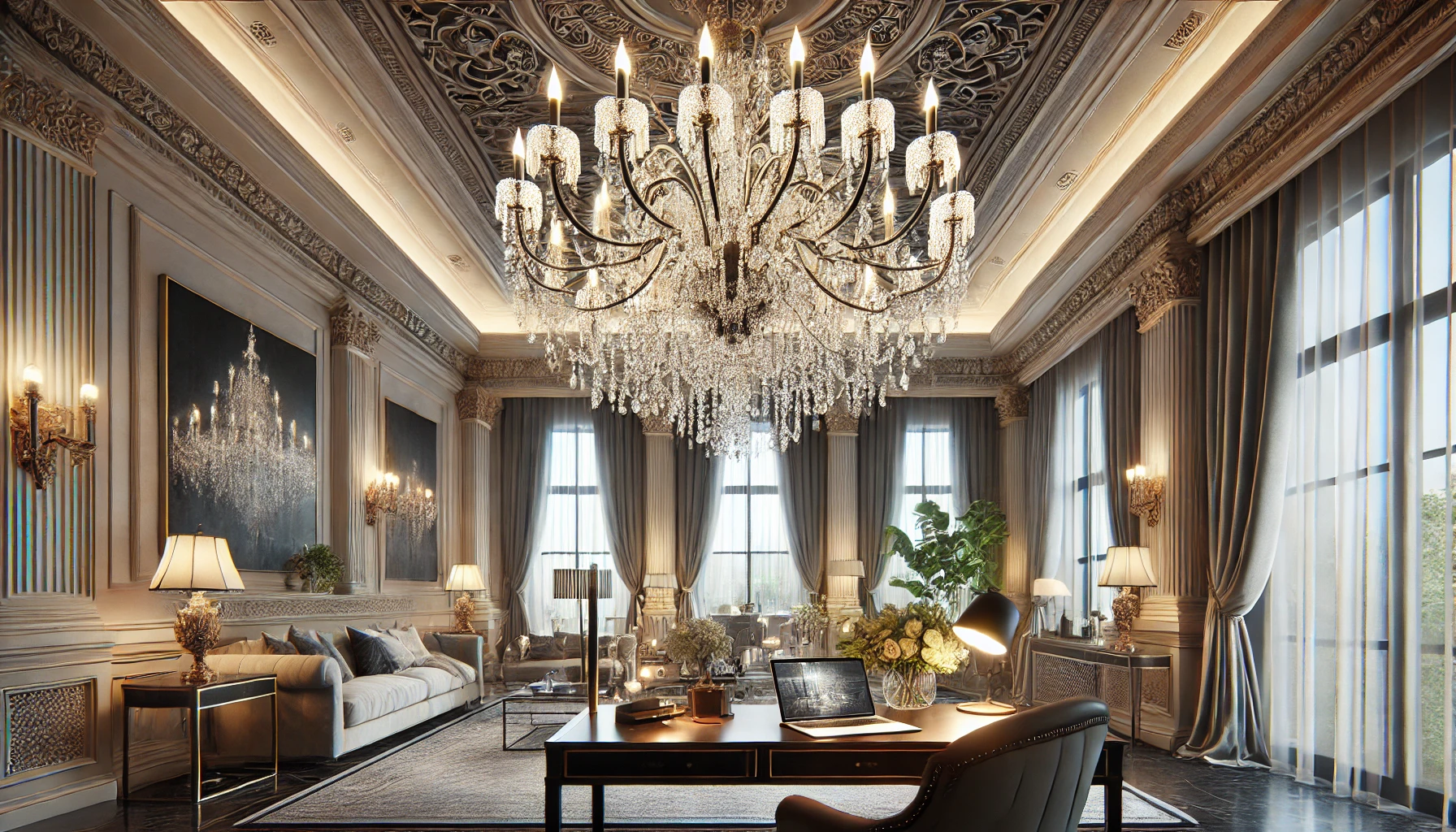
Chandeliers for a Statement
Chandeliers have long been associated with elegance, adding drama and sophistication to any room. Once reserved for formal dining spaces, today’s chandeliers come in various styles and sizes suitable for almost any area. Whether you want to make a statement in your living room or add luxury to your bedroom, chandeliers can elevate the look instantly.
Chandeliers serve as both functional and decorative lighting, providing ambient light while acting as focal points. In modern homes, minimalist chandeliers with clean lines are popular, while traditional spaces might opt for crystal fixtures with intricate designs. Many homeowners are also choosing unconventional materials, like wood or metal, to create custom chandeliers that reflect their style.
When selecting a chandelier, consider the room’s scale. An oversized chandelier may overwhelm a small space, while a delicate fixture could get lost in a larger room. The key is to find a balance that complements the space’s size while enhancing the overall design. Chandeliers can truly brighten your home with elegance.
Task Lighting for Workspaces
Task lighting is essential in home design, especially where focused illumination is needed, like workspaces or kitchens. Unlike ambient lighting that provides general illumination, task lighting directs light where it’s most needed, reducing eye strain and improving productivity. For example, under-cabinet lights in kitchens illuminate countertops, while desk lamps in home offices offer bright light for reading or writing.
Task lighting is flexible and can be installed in various ways based on the space and its purpose. Adjustable desk lamps, wall-mounted lights, and pendant lights all provide task lighting effectively. This type of lighting can also enhance room design, adding visual interest and contrast with other light sources.
When creating a room’s lighting plan, consider how different lighting types work together. Often, task lighting is layered with ambient and accent lighting to create a cohesive design. By incorporating task lighting, you enhance both functionality and aesthetics in key areas of your home.
Home Lighting Design Ideas: Customize Your Home’s Ambiance
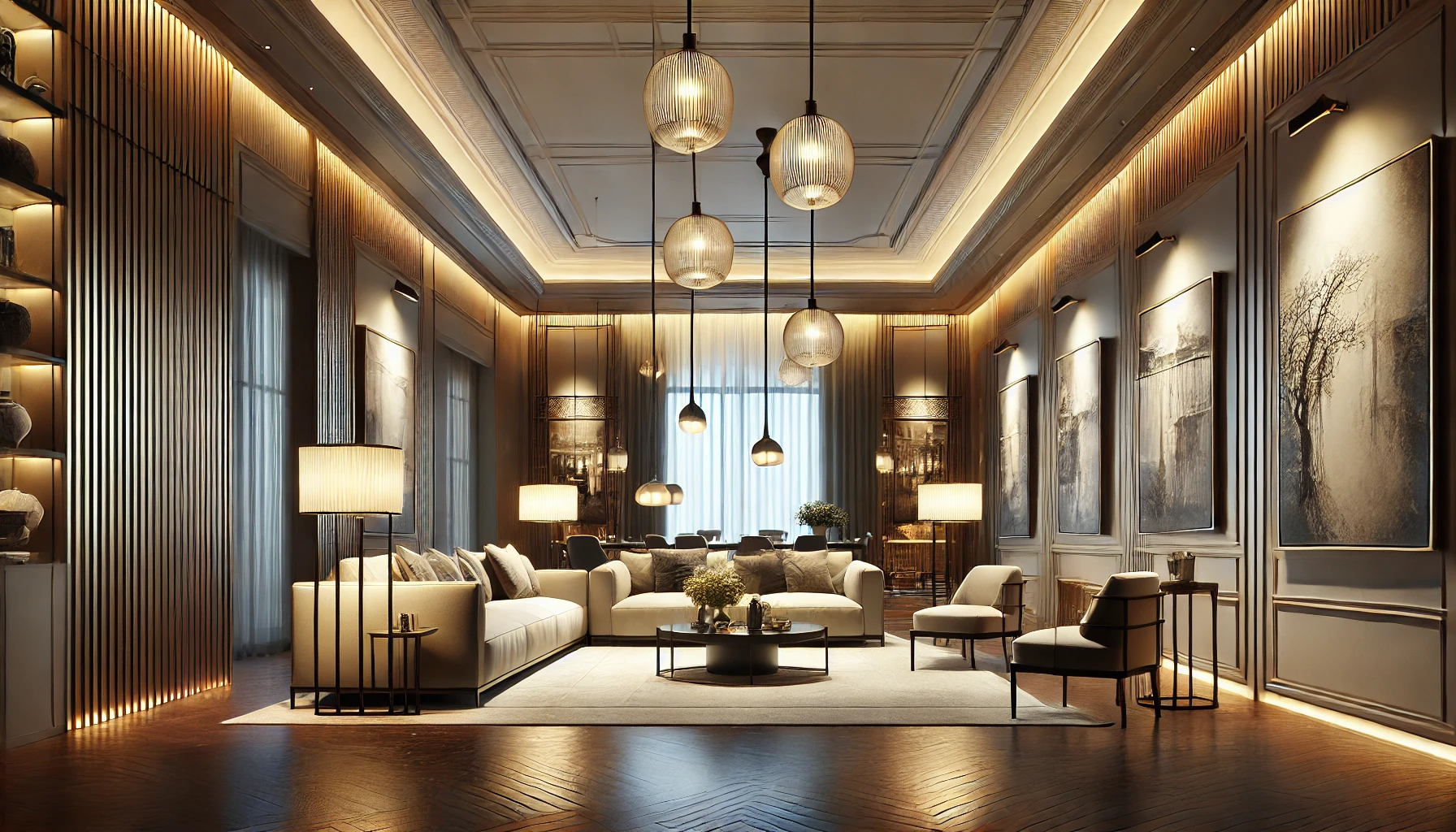
Accent Lighting for Artwork
Accent lighting is essential for showcasing artwork and unique features in your home. Unlike general lighting, which illuminates the entire room, accent lighting focuses on specific elements, creating visual interest. Picture lights and track lighting highlight your favorite pieces, while uplights showcase architectural features.
This lighting type adds depth, creating contrast and shadows that bring your space to life. It’s particularly effective in living rooms or dining areas, drawing attention to beautiful paintings or sculptures. By enhancing aesthetic appeal, accent lighting creates a more intimate atmosphere, making your space feel unique and curated.
When planning accent lighting, consider placement and intensity. Too much light can overpower, while too little may lack emphasis. Dimmers allow you to adjust brightness based on the time of day or mood. Incorporating accent lighting can elevate your space and transform everyday objects into stunning visual features.
Lighting for High Ceilings
High ceilings create a sense of grandeur but can present unique lighting challenges. Standard ceiling lights often fail to illuminate these large spaces, making them feel cold. To effectively light a room with high ceilings, use a combination of ambient, task, and accent lighting to enhance architectural features.
Pendant lights and chandeliers are ideal for high ceilings, as they can be hung at various heights, adding intimacy. Large chandeliers serve as functional lighting and eye-catching décor, while multiple pendants create visual interest. Wall sconces and floor lamps provide supplementary lighting, ensuring even illumination throughout.
Uplighting is effective for high ceilings, directing light upward to highlight height and depth. This technique emphasizes architectural features like beams or textured ceilings, enhancing the room’s ambiance. Combining different lighting types with appropriately scaled fixtures creates a welcoming, well-lit space that showcases your home’s beauty.
Bedroom Home Lighting Ideas: Creating a Relaxing Atmosphere
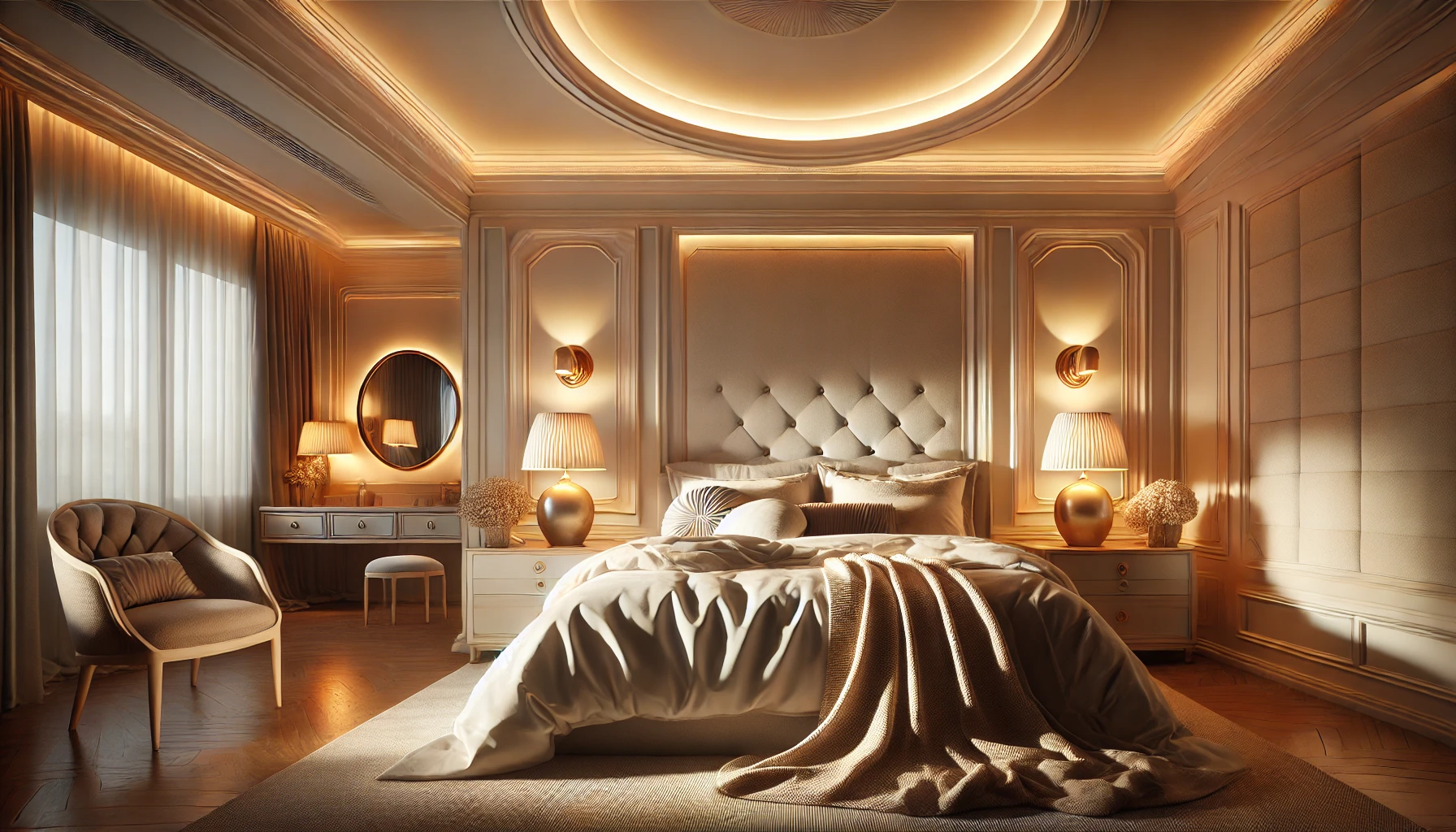
Soft Ambient Lighting
In bedroom lighting design, the goal is to create a calming environment for relaxation. Harsh overhead lighting can feel intrusive at night, so focusing on softer, diffused sources is vital. Ambient lighting, through wall sconces or table lamps with warm bulbs, creates a gentle glow, ideal for winding down.
Soft ambient light sets the bedroom mood. Dimmers allow you to adjust brightness for various activities, whether getting ready for bed or reading. Warm-toned bulbs create a cozy atmosphere, while cooler tones work for tasks or morning routines.
By incorporating soft ambient lighting, you create an inviting and restful space. Striking a balance between functionality and comfort ensures the room is well-lit when needed but also serene for relaxation. This thoughtful lighting approach can transform your bedroom into a sanctuary.
Bedside Task Lighting
Bedside task lighting is essential in bedrooms, providing focused light for reading or relaxing without disturbing a partner. Table lamps and adjustable wall sconces are perfect options for bedside lighting, offering direct illumination right where it’s needed. These fixtures can enhance your room’s overall design as well.
Bedside task lighting is convenient, allowing for a comfortable lighting experience. If you love reading before bed, an adjustable lamp can focus light on your book without brightening the whole room, especially useful if your partner prefers darkness.
Furthermore, bedside task lighting adds ambiance, creating a warm, inviting atmosphere. By selecting fixtures that match your style, you can achieve a bedroom that’s both functional and beautiful, enhancing your overall living experience.
Home Office Lighting Ideas: Boost Productivity and Comfort
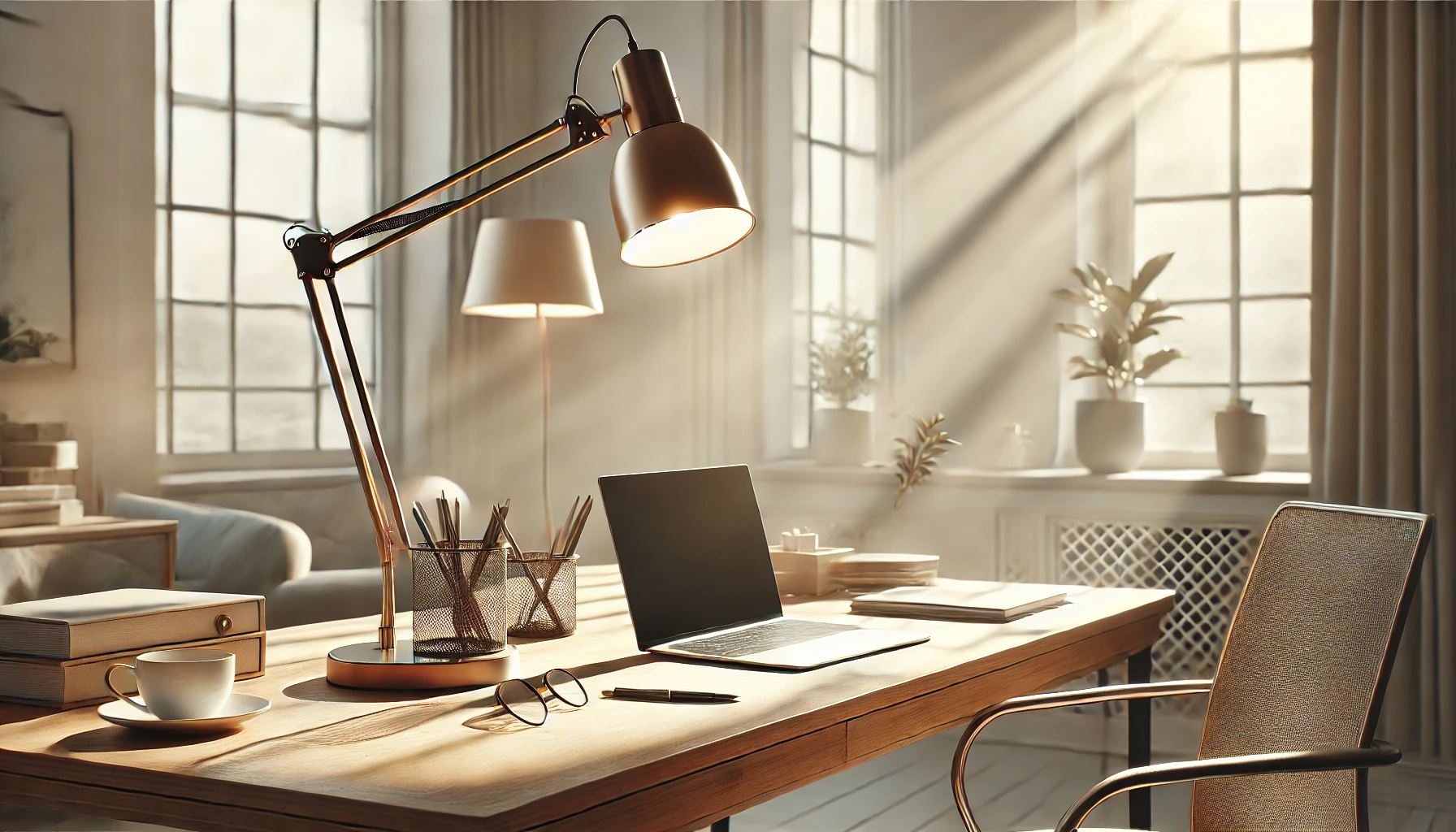
Bright Task Lighting
The home office requires bright, focused light to support productivity and reduce eye strain. Task lighting, like desk lamps or overhead fixtures, is crucial for illuminating workspaces. A well-lit desk improves visibility and prevents fatigue and headaches caused by poor lighting. Bright, cool-toned bulbs mimic natural daylight and are ideal for home offices.
In addition to desk lamps, adjustable floor lamps and wall-mounted lights can also provide task lighting in home offices. These fixtures direct light exactly where it’s needed, eliminating shadows and creating an efficient workspace. When setting up task lighting, consider both placement and intensity.
Investing in quality task lighting creates a home office that supports focus and productivity. The right lighting significantly impacts how comfortable and efficient your workspace feels, enabling longer periods of work without fatigue.
Natural Light Integration
Natural light is invaluable in home offices, improving mood, boosting productivity, and reducing reliance on artificial lighting during the day. Positioning your desk near a window maximizes natural light, creating a bright, energizing workspace. Natural light enhances aesthetics while reducing eye strain and improving focus.
However, too much sunlight can cause glare, so balancing natural light with other sources is important. Use blinds or curtains to control sunlight, adjusting based on the time of day or weather. For offices lacking natural light, daylight-mimicking bulbs are a great alternative.
Integrating natural light into your home office design creates a bright and inviting space that enhances comfort and productivity. Whether working from home full-time or occasionally, the right lighting makes a significant difference in how enjoyable your workspace feels.
Home Lighting Ideas for Small Spaces: Maximize Light in Compact Areas
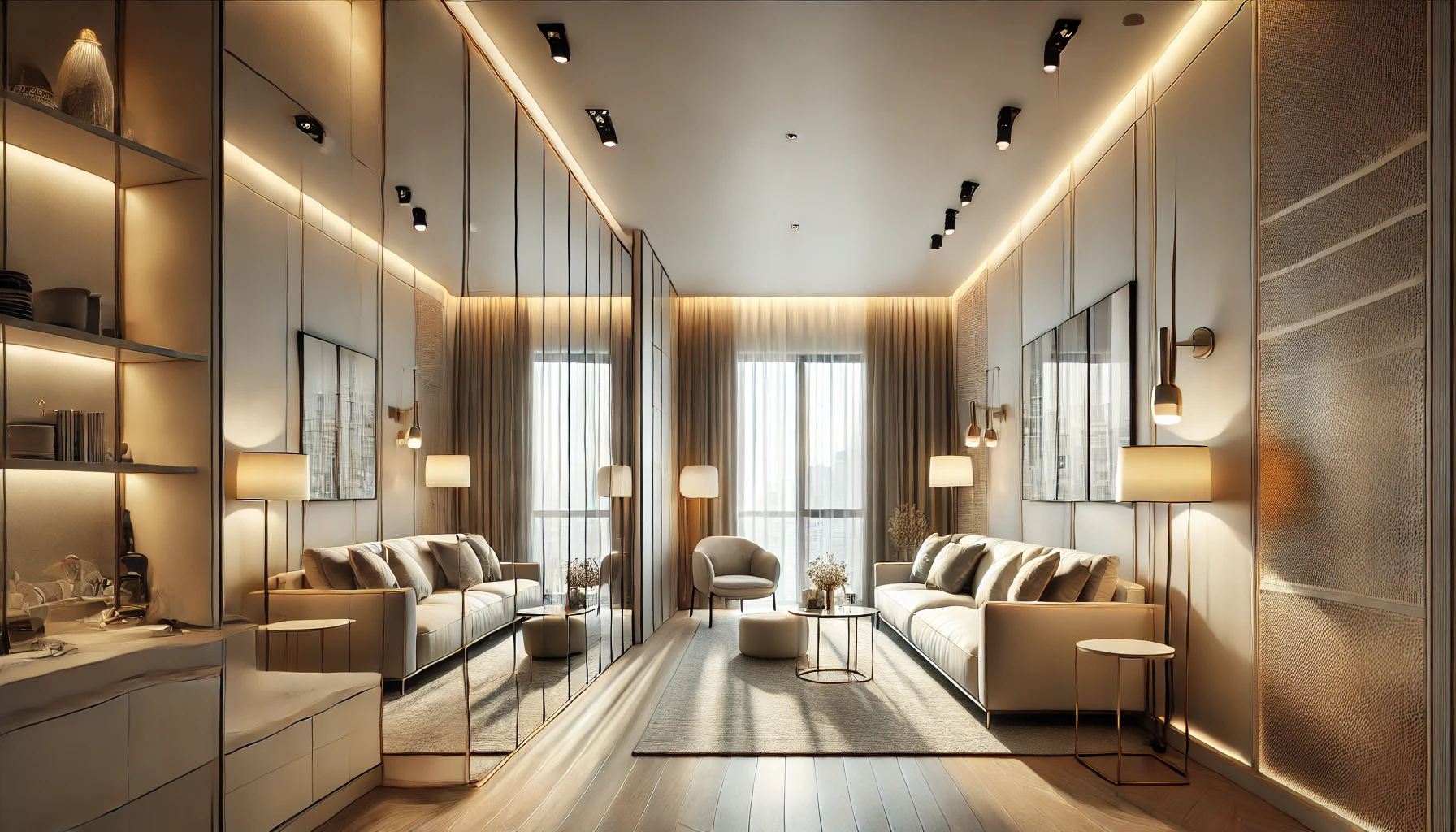
Wall-Mounted Lighting
Small spaces present unique lighting challenges due to limited floor space for lamps. Wall-mounted lighting is an excellent solution, freeing up valuable space while providing ample illumination. Wall sconces and swing-arm lamps can be installed in bedrooms, living rooms, or entryways, brightening areas without clutter.
Wall-mounted lighting is versatile, positioned at various heights to provide general and task lighting. In a small bedroom, sconces beside the bed replace traditional lamps, creating a minimalist look. Swing-arm wall lights in living rooms can direct light where needed, enhancing functionality.
Incorporating wall-mounted lighting maximizes both functionality and aesthetic appeal. Choose fixtures that complement the space’s scale and provide appropriate light for activities. With the right wall-mounted lights, even the smallest rooms can feel bright and inviting.
Mirrors to Reflect Light
Mirrors effectively make small spaces feel larger and brighter by reflecting natural and artificial light. By placing mirrors near windows or light fixtures, you can maximize light in compact areas, creating a more open and airy atmosphere. This technique is especially helpful in rooms with limited natural light.
Mirrors also enhance the room’s decor. Large, framed mirrors serve as focal points, while smaller ones can be grouped for a gallery effect. When selecting mirrors, consider size and placement to ensure they reflect light effectively.
Incorporating mirrors into small space design creates a brighter, more open environment. Whether in a tiny bedroom or compact living room, mirrors are a stylish solution for maximizing light and space.
Energy-Efficient Home Lighting Ideas: Save Money and the Planet
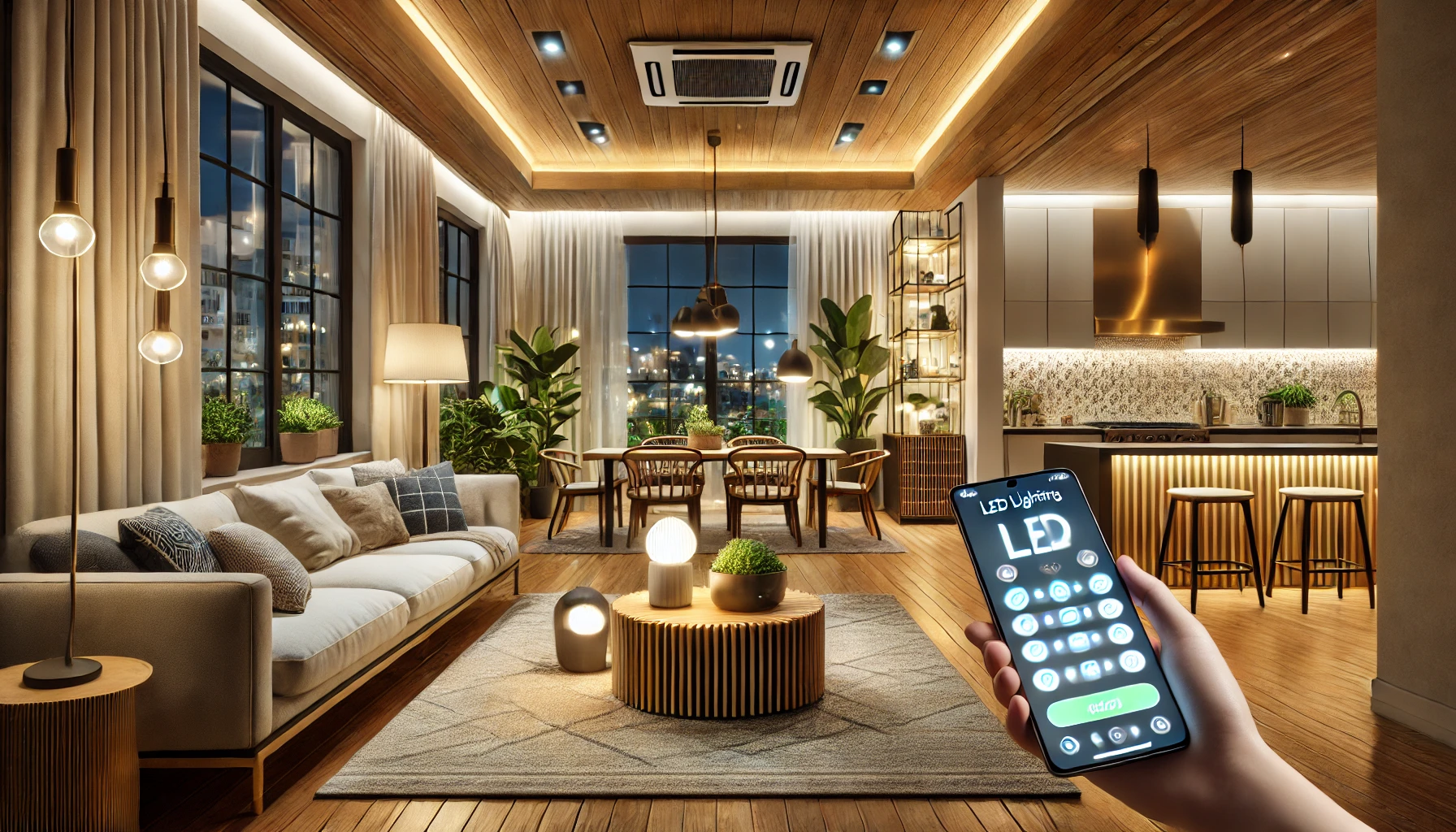
LED Lighting for Efficiency
LED lighting has revolutionized home illumination, offering an energy-efficient and eco-friendly alternative to traditional bulbs. LED bulbs consume significantly less electricity and last much longer, making them a smart choice for your wallet and the environment. In fact, they can last up to 25 times longer than incandescent bulbs, reducing frequent replacements and lowering overall energy consumption.
LED lighting’s versatility is another advantage. Available in various colors and styles, LED bulbs can be tailored to suit each room’s needs. Whether you need bright, cool-toned lights for workspaces or warm lighting for living areas, there’s an LED option for you.
Moreover, LED lights are environmentally friendly since they don’t contain harmful materials like mercury found in CFLs. By switching to LED lighting, you can lower your carbon footprint and contribute to a sustainable future. Upgrading your lighting system to LED is a simple way to save energy.
Smart Lighting Systems
Smart lighting systems are gaining popularity for their convenience and energy efficiency. With smart lighting, you can control your home’s lights via smartphone or voice assistant, adjusting brightness, color, and schedules from anywhere. This control enhances comfort and functionality while saving energy by ensuring lights are on only when needed.
One major benefit of smart lighting is creating custom scenes for different activities. For instance, program your lights to dim in the evening for a cozy atmosphere or brighten in the morning to wake you up. Smart systems can also change colors, allowing for dynamic lighting experiences based on your preferences.
Smart lighting systems integrate with other smart home devices, creating a fully connected environment. By linking your lighting with security systems or thermostats, you can enhance efficiency and ease of use. Whether aiming to reduce energy costs or improve ambiance, smart lighting is a worthwhile investment.
Outdoor Home Lighting Ideas: Illuminate Your Exterior
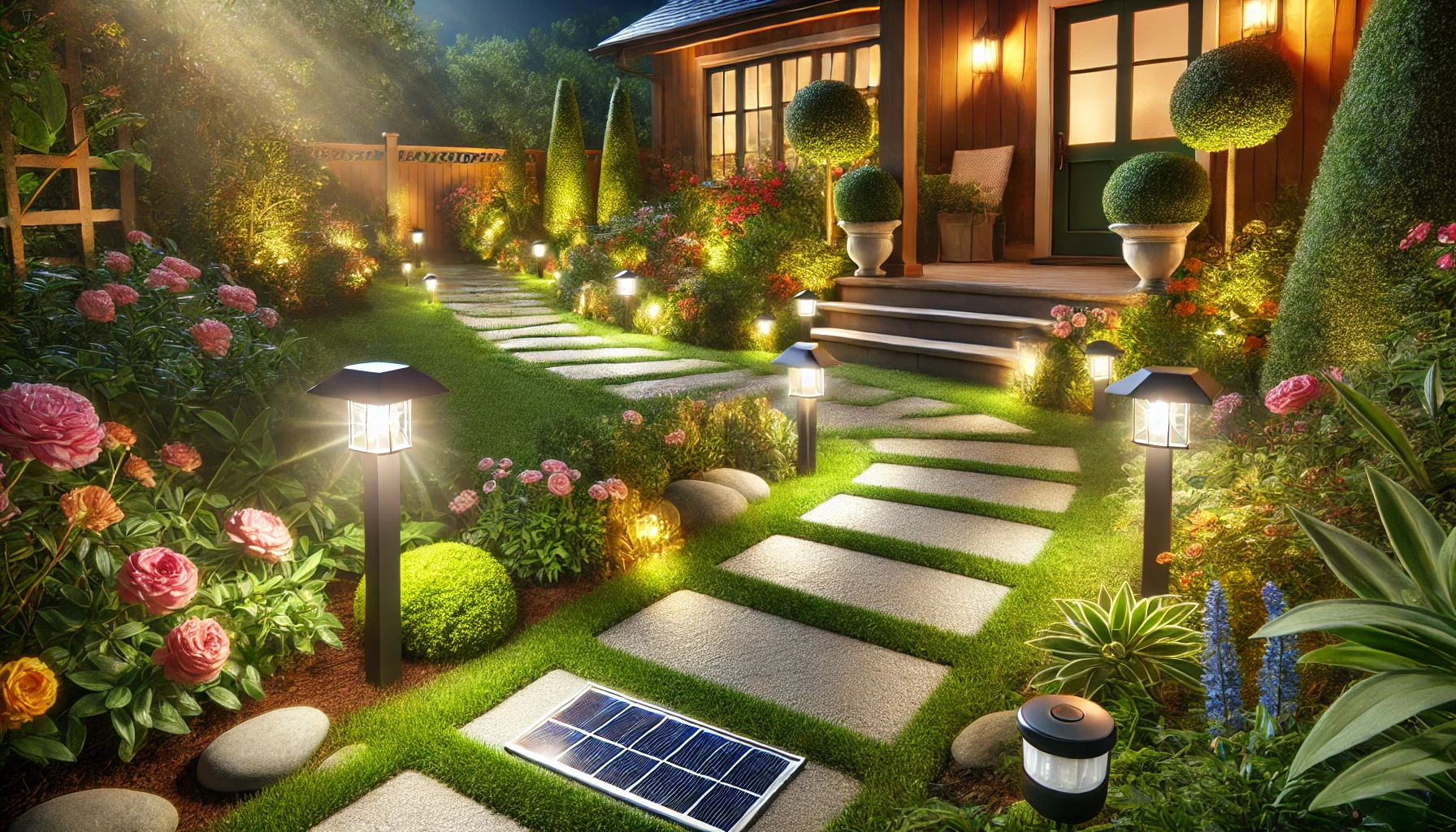
Solar-Powered Pathway Lights
Solar-powered pathway lights are a popular and eco-friendly choice for illuminating outdoor spaces like walkways and gardens. These lights harness solar energy, charging during the day and automatically turning on at night to provide a soft glow. One major advantage is their energy efficiency; they require no electricity, making them a sustainable choice for homeowners.
Solar pathway lights are easy to install and maintain. Without needing electrical connections, they can be placed anywhere in your yard. Most are weather-resistant, ensuring they withstand the elements while providing reliable illumination year-round.
When selecting solar lights, consider brightness and coverage. Some offer soft lighting, while others provide brighter illumination for visibility. Choose lights that fit your needs, whether decorative accent lights or functional pathway lighting. Incorporating solar-powered lights enhances safety and aesthetics while reducing energy consumption.
Motion Sensor Lighting for Security
Motion sensor lighting effectively enhances your home’s exterior security, illuminating bright areas when movement is detected. These lights are typically installed near entryways or driveways, deterring intruders and providing visibility when you arrive home. Because they activate with movement, motion sensor lights are more energy-efficient than traditional outdoor lights, making them a smart choice for security.
These lights also enhance convenience. For example, if you’re carrying groceries or arriving home after dark, motion sensor lights turn on automatically, providing visibility without fumbling for switches. Many models have adjustable settings for sensitivity and brightness, allowing you to customize their operation.
Kitchen Home Lighting Ideas: Brighten Your Cooking Space
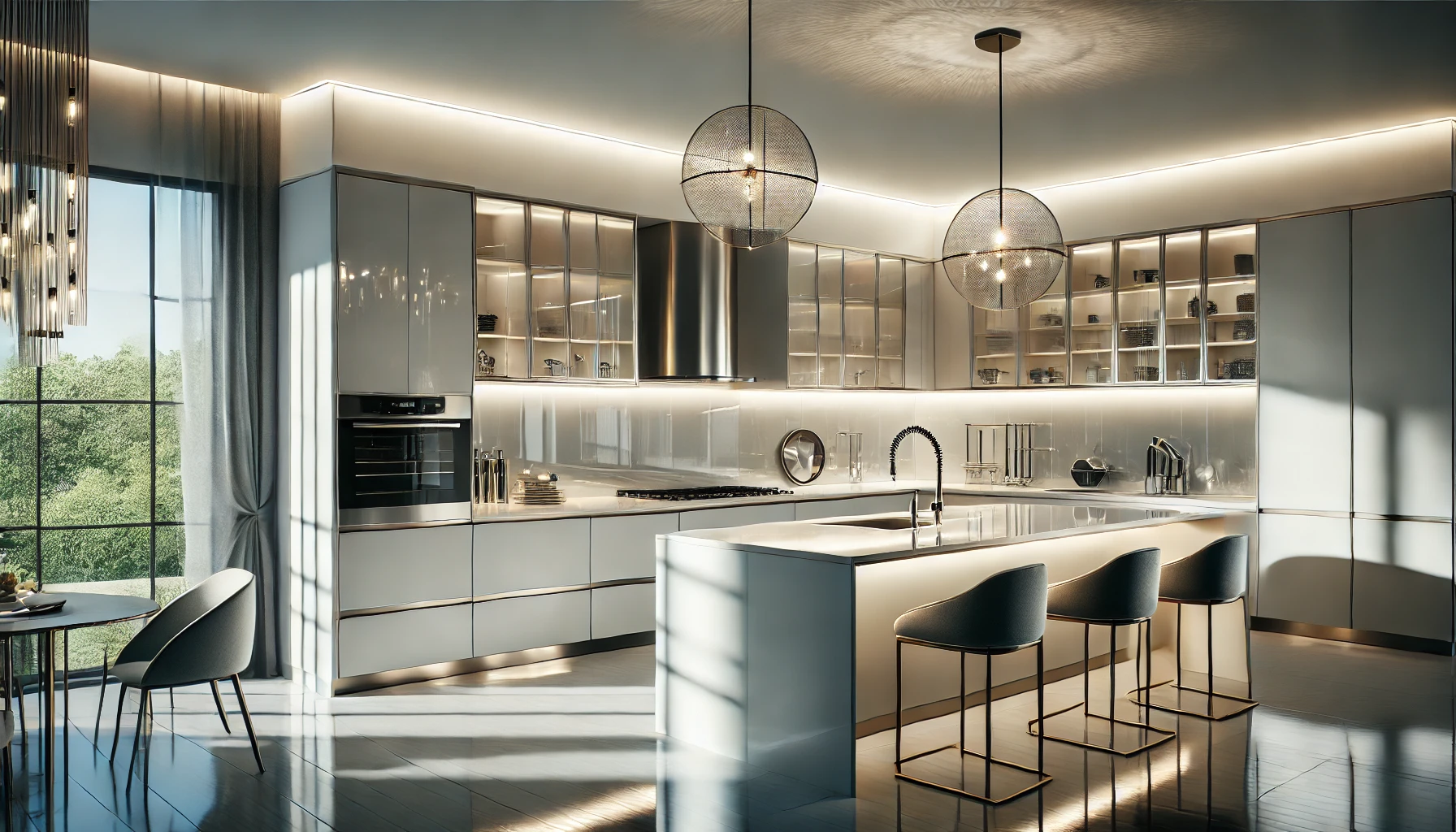
Under-Cabinet Lighting
Under-cabinet lighting is a must for any kitchen. It provides focused light on countertops, making food preparation easier and safer. LED strip lights or puck lights are both excellent options for bright, efficient task lighting.
Island Pendant Lights
Pendant lights above your kitchen island not only provide task lighting but also serve as a stylish design element. Choose pendants that complement your kitchen’s décor and hang them at the right height to ensure proper illumination.
When choosing motion sensor lighting, consider optimal placement for coverage. Install lights at key entry points and along pathways for increased safety. With the right motion sensor lighting, you can create a secure outdoor environment for your home.
Home Lighting Ideas for Ambiance: Set the Mood in Every Room
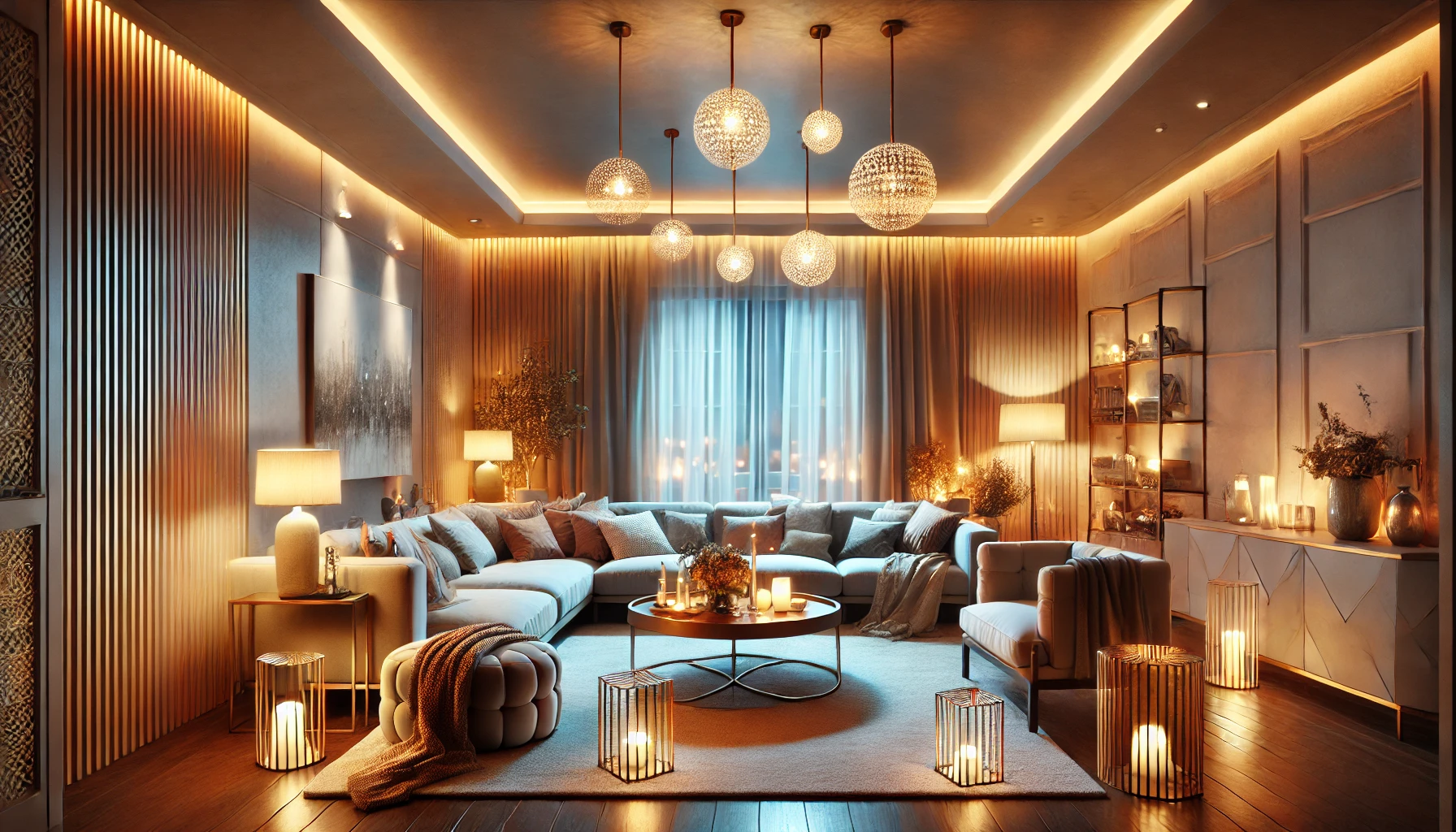
Color-Changing LED Lights
Color-changing LED lights are a fun and versatile way to add ambiance to any room. With a few taps on your phone or a voice command, you can change the color and brightness to suit your mood. Whether creating a cozy atmosphere for movie nights, vibrant settings for parties, or calming hues for relaxation, color-changing LEDs provide flexibility for any occasion.
These lights enhance functionality in your spaces. In a living room, you can set cool-toned lights for working, then switch to warm glows for evenings. In bedrooms, calming blues or purples create peaceful environments, while energizing whites help wake you up in the morning. Smart systems allow automatic color changes based on the time of day.
Color-changing LEDs are energy-efficient and environmentally friendly. They consume less electricity than traditional bulbs and have longer lifespans, making them a cost-effective choice for homeowners. By integrating these lights into your design, you create a dynamic environment that adapts to your needs.
Lighting for Entertainment Spaces
Lighting is crucial for setting the mood in home theaters, game rooms, or entertainment areas. In a theater, dimmable lights create a cinematic atmosphere, while soft lighting reduces eye strain during viewing. Many homeowners opt for LED strips or recessed lighting to create modern, minimalist looks that enhance the room’s appeal.
Colored lighting adds excitement to game rooms or entertainment spaces. Color-changing LEDs can shift based on the activity, creating dynamic environments for hosting game nights or movie screenings. The right lighting enhances the overall experience, making your space inviting and enjoyable.
When designing lighting for entertainment areas, consider functionality and ambiance. The lighting should provide general illumination and create a comfortable atmosphere that enhances your activities. By incorporating dimmable, color-changing, or accent lighting, you can customize your entertainment spaces for relaxation and fun.
Creative Home Lighting Ideas: Add Personality to Your Space
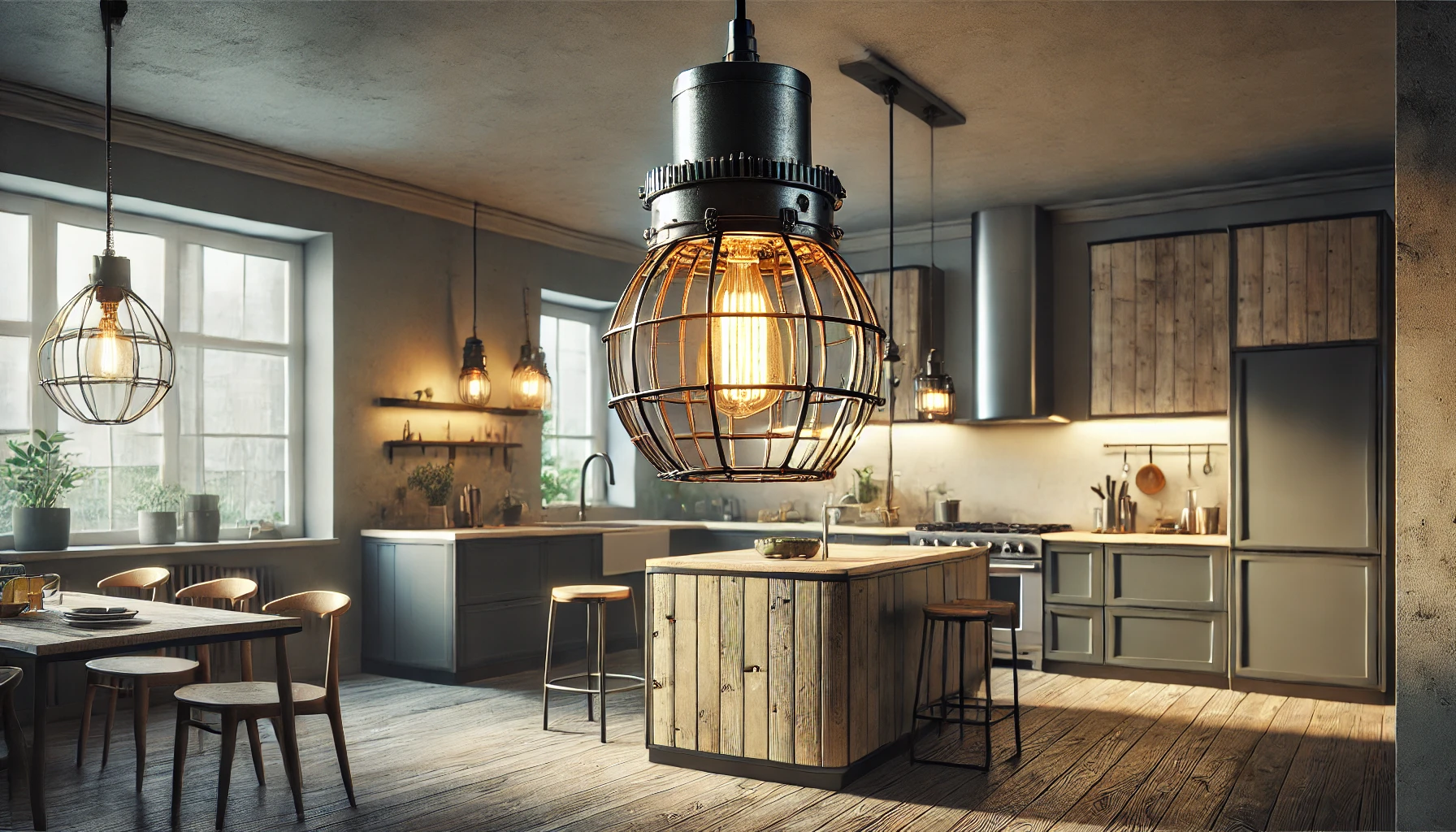
DIY Lighting Fixtures
If you’re seeking a personalized way to illuminate your home, DIY lighting fixtures let you showcase creativity. From repurposing materials like mason jars or wine bottles to crafting custom lampshades, DIY projects offer the freedom to design unique fixtures that reflect your style. Whether rustic, industrial, or eclectic, the possibilities for custom lighting are endless.
DIY projects are also cost-effective. Instead of spending hundreds on designer fixtures, you can create unique solutions using inexpensive or repurposed materials. For example, transforming old jars into chandeliers or reclaimed wood into wall sconces can enhance your home’s design.
DIY lighting projects let you customize fixtures for your space’s needs. Whether a small pendant for a nook or a dramatic chandelier for a dining room, you can create lighting that matches your vision. This level of personalization helps achieve your desired aesthetic and meets your functional needs.
Engaging in DIY projects can also express your creativity. They allow experimentation with various materials and designs, enabling you to create something unique. Involving family or friends can make the process enjoyable and collaborative, and witnessing your ideas come to life is incredibly rewarding.
Mixing Lighting Styles
Mixing different lighting styles adds depth and intrigue to your home’s design, creating an ambiance that reflects your taste. By combining various fixtures—like modern pendants with vintage lamps—you achieve a curated, intentional look. This eclectic approach showcases creativity and enhances your space’s atmosphere.
When mixing styles, consider how elements complement each other. For instance, a contemporary living room with sleek furnishings can contrast with vintage or industrial fixtures, creating eye-catching designs. Conversely, modern lighting in traditional settings can offer refreshing contrasts, blending contemporary and classic styles harmoniously.
Mixing styles also provides functional versatility. Different areas may need distinct lighting types for their specific purposes. A bold chandelier in a dining area creates a statement, while a unique table lamp adds charm and functionality to a side table. Thoughtfully incorporating various styles enhances your home’s functionality and visual appeal.
Experimenting with different styles encourages you to think outside the box. Don’t hesitate to explore unexpected combinations, as they can lead to stunning results. With creativity and an open mind, mixing lighting styles can elevate your home’s design, transforming everyday spaces into extraordinary experiences.
Home Lighting Ideas for Apartments: Brighten Small Living Spaces
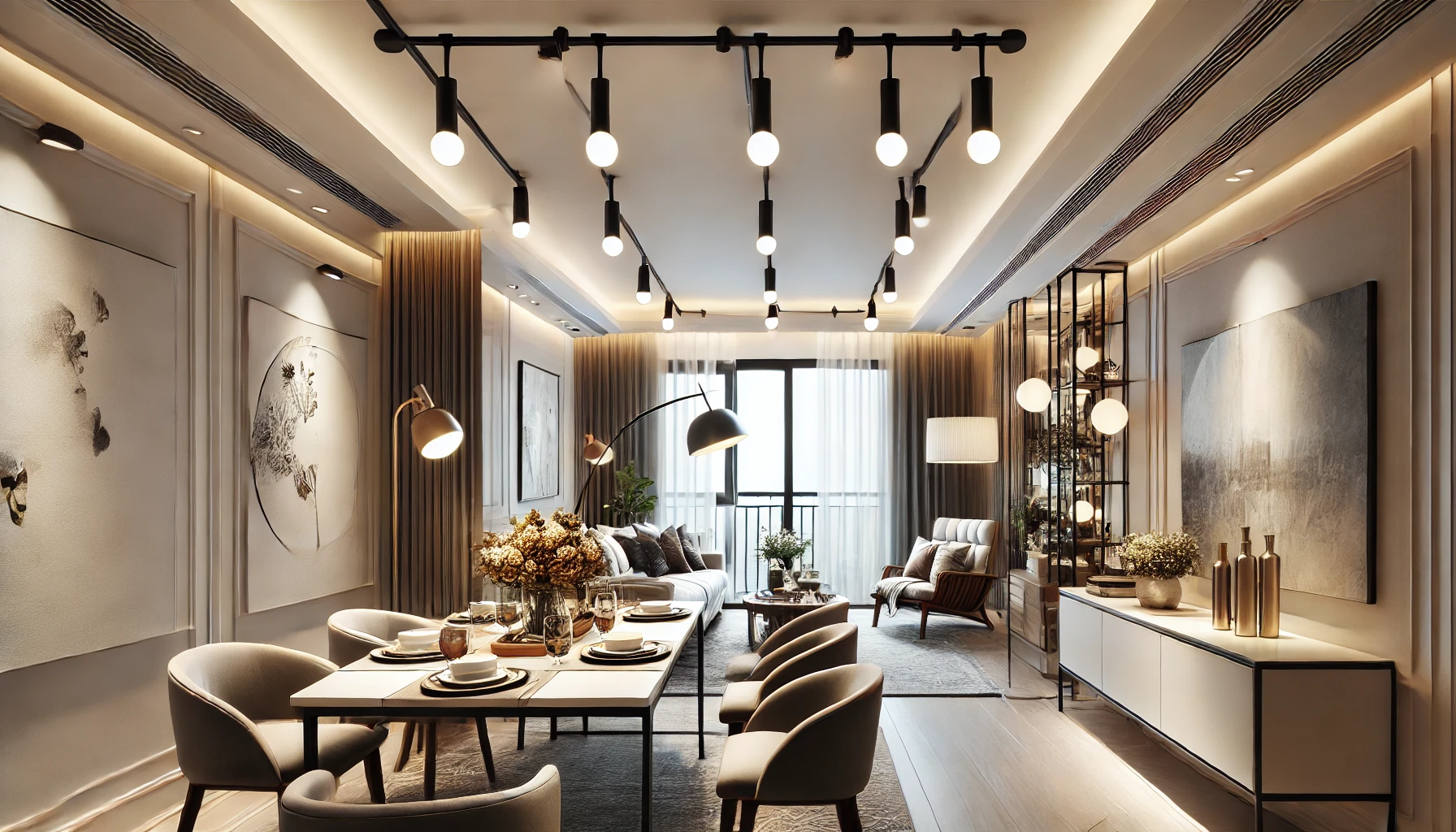
Track Lighting for Versatility
Track lighting is perfect for illuminating apartments, especially those with limited space. This system features a ceiling-mounted track with adjustable fixtures that direct light where needed. Its versatility allows homeowners to customize their layout according to each room’s needs, maximizing brightness without overwhelming small living areas.
Track lighting precisely directs light. For example, you can position fixtures above kitchen countertops for food preparation or highlight artwork and architectural features in living rooms. This adjustability is invaluable in apartments, where flexibility and functionality are crucial.
Available in various styles and finishes, track lighting integrates seamlessly into any décor. From modern chrome to rustic bronze, you can find a solution that matches your aesthetic. This adaptability enhances the overall room look while creating a cohesive design throughout your apartment.
Floor Lamps for Flexibility
Floor lamps are an excellent lighting option for apartments, providing flexibility and functionality in smaller spaces. Unlike fixed fixtures, floor lamps can be moved easily, allowing you to customize your lighting based on your needs. This adaptability is vital in apartments, where layouts change frequently.
Consider the style, height, and brightness when choosing a floor lamp. With countless designs available, from modern to vintage, finding one that complements your décor is easy. Adjustable floor lamps, which let you change the height and angle, are particularly useful for creating inviting atmospheres.
Floor lamps also serve as decorative elements, enhancing your space’s design. A stylish floor lamp can draw attention and become a statement piece, adding personality. Incorporating floor lamps into your apartment design creates a well-lit, inviting environment that feels comfortable and stylish.
DIY Home Lighting Ideas: Personalize Your Space with Custom Fixtures
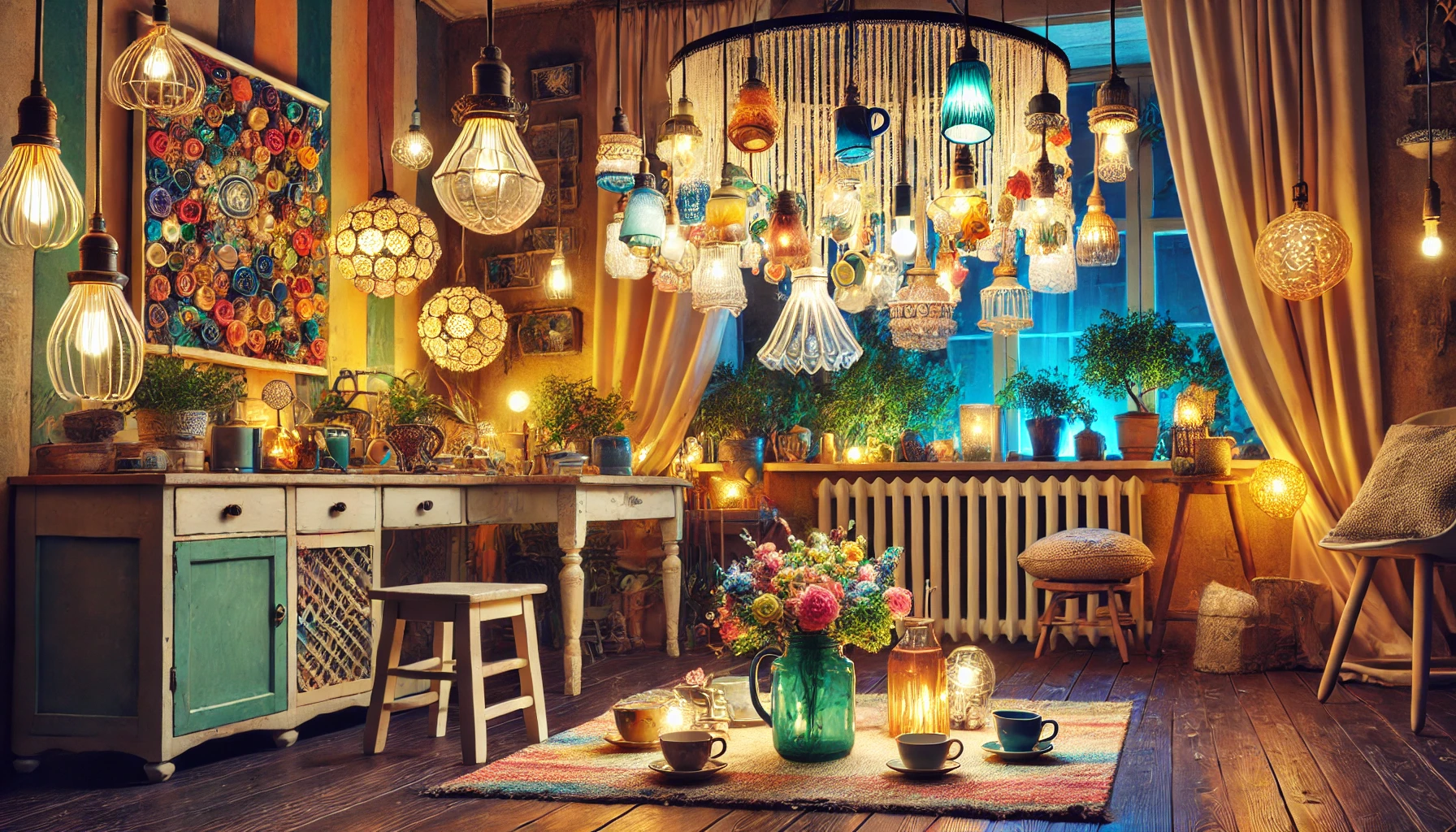
Upcycling Old Items
Upcycling old items into lighting fixtures is a creative, eco-friendly way to personalize your home. Whether repurposing glass jars or vintage teacups, countless possibilities exist for transforming everyday objects into functional lighting solutions. This approach adds character to your space and reduces waste, promoting sustainability.
Upcycled fixtures are unique. Each piece showcases your style and creativity, like turning a mason jar into a pendant light. Alternatively, mismatched teacups can become a whimsical chandelier, adding charm to your dining area.
Upcycling is budget-friendly, allowing you to customize designs to fit your preferences. Choose materials and colors that resonate with you, creating fixtures that enhance your home’s overall look. By embracing creativity and exploring upcycling, you can add unique lighting designs while contributing to a sustainable lifestyle.
Creating Statement Pieces
Creating statement lighting fixtures can become the centerpiece of any room, adding drama while serving a practical purpose. Whether crafting a bold chandelier or oversized pendant light, DIY projects showcase your personality and style. These fixtures can be made from various materials, making customization easy.
When designing statement lighting, consider size and scale. A large chandelier can become a focal point in a dining room, while smaller lamps add personality to bedside tables. Incorporating different textures and colors creates dynamic effects that enhance overall room design.
Making your own statement lighting allows you to experiment with styles and concepts. Whether you prefer modern, industrial looks or rustic aesthetics, DIY statement lighting offers endless personalization opportunities. By creating unique fixtures, you add artistic elements that reflect your taste, ensuring your space is as individual as you are.
Thank You for Reading!
We encourage you to take the next step in brightening your home with thoughtful lighting choices. Whether you’re ready to install new fixtures, explore smart lighting systems, or dive into DIY projects, the possibilities are endless. Contact us for personalized lighting design services or to discuss the best products and solutions for your specific needs. Our team is here to help you create a beautifully illuminated home that enhances your lifestyle while reflecting your unique style. Let’s work together to bring your lighting vision to life and transform your spaces into stunning, well-lit environments you love!
F.A.Q: Home Lighting Ideas
What are the best plants for a low-maintenance home garden?
Some of the best low-maintenance plants include succulents, lavender, ornamental grasses, and hostas. These plants require minimal care and are ideal for busy homeowners or those looking for an easy-to-manage garden.
How can I create a garden in a small space?
You can create a garden in a small space by using vertical gardening techniques, container gardening, and maximizing every inch with compact plants. Consider using wall-mounted planters or tiered plant stands to save space.
What are the benefits of a raised garden bed?
Raised garden beds provide better drainage, improved soil quality, and easier access for planting and weeding. They are especially useful for people with limited mobility or poor soil conditions in their yards.
How do I start a sustainable garden?
To start a sustainable garden, begin by composting kitchen scraps and yard waste to create nutrient-rich soil. Choose native plants that are well-suited to your climate and require less water, and avoid using harmful pesticides.
What are some budget-friendly garden design ideas?
Budget-friendly garden ideas include using recycled materials for garden beds, buying plants in bulk, and starting plants from seeds. You can also repurpose household items like old tires, pallets, and containers as planters.
How do I design a garden for year-round interest?
To design a garden for year-round interest, select a mix of plants that bloom in different seasons, include evergreen shrubs, and add hardscape features like pathways, sculptures, or water features to keep the garden visually appealing throughout the year.
What are the best garden design trends for 2024?
Some of the top garden design trends for 2024 include vertical gardens, eco-friendly landscapes, native plants, edible gardens, and minimalist designs with sleek, modern elements.
How do I incorporate a water feature into my garden?
You can incorporate a water feature by adding a pond, fountain, or waterfall to your garden. Water features can be as simple or elaborate as you want and add a calming, serene atmosphere to your outdoor space.
What are the key elements of a modern garden design?
Key elements of modern garden design include clean lines, geometric shapes, minimalist plant choices, and contemporary materials like concrete, steel, and glass. Less is more in modern gardens, with an emphasis on simplicity and structure.
How can I make my garden more eco-friendly?
To make your garden more eco-friendly, use organic fertilizers and pesticides, plant native species that require less water, install a rainwater collection system, and create habitats for local wildlife by planting pollinator-friendly plants.
What are the best lighting options for my garden?
The best lighting options for gardens include solar-powered lights, string lights for a cozy ambiance, and spotlights to highlight key features like trees or sculptures. Garden lighting not only extends usability but also enhances the aesthetic appeal.
How do I design a child-friendly garden?
Designing a child-friendly garden involves creating safe play areas, using non-toxic plants, and incorporating fun elements like sandpits, swings, or water features. Ensure the garden is safe and stimulating for kids to explore and enjoy.
What is the best soil for a home garden?
The best soil for a home garden is rich in organic matter and has good drainage. You can improve poor soil by adding compost or organic fertilizers. Loamy soil, which is a mix of sand, silt, and clay, is ideal for most home gardens.
How can I attract wildlife to my garden?
You can attract wildlife by planting native species that provide food and shelter, adding bird feeders, creating a water source, and avoiding the use of pesticides. Native plants and pollinator-friendly flowers are especially attractive to birds, bees, and butterflies.
What are the best vegetables to grow in a home garden?
Some of the best vegetables to grow in a home garden include tomatoes, lettuce, carrots, beans, cucumbers, and herbs like basil and parsley. These vegetables are easy to grow and can thrive in most home gardens.
 Home Designing Get expert home decor tips and design inspiration at HomeDesigning.blog. Transform your living spaces with trending styles and DIY ideas!
Home Designing Get expert home decor tips and design inspiration at HomeDesigning.blog. Transform your living spaces with trending styles and DIY ideas!
